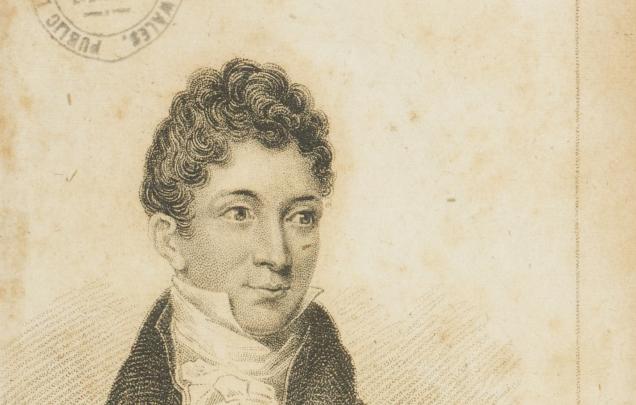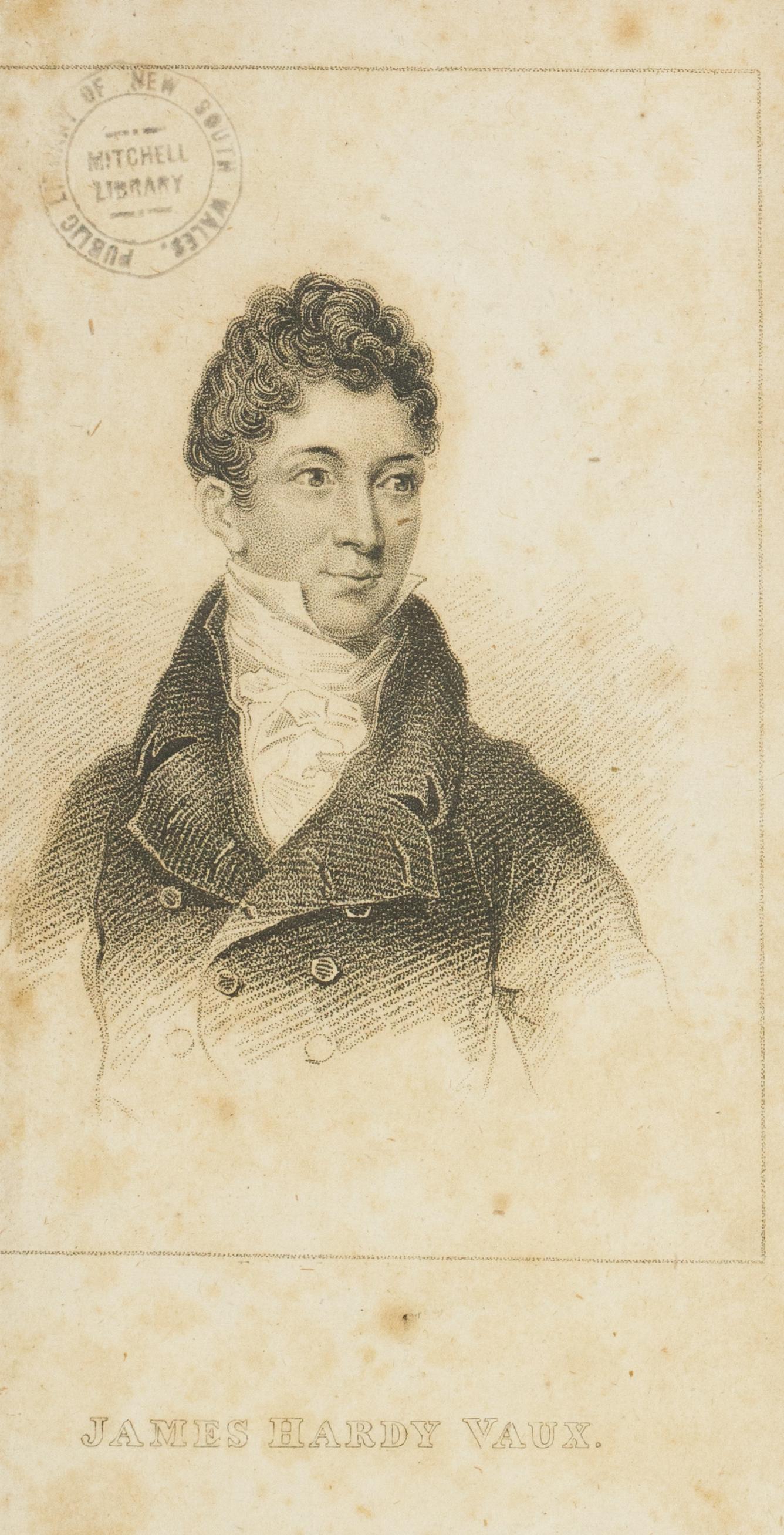Flash language
Students discover the man behind the dictionary of convict slang.

Flash language
[Teachers please note that James Hardy Vaux was NOT a First Fleet convict.]
Convicts spoke a unique language called flash language. It was a part of British culture they brought to NSW. It was spoken by many of those on the First Fleet and was used for a specific purpose – to deceive or confuse people like judges, officials and others who weren’t part of the same social group as convicts. As flash language was so difficult to understand, it was a perfect way for convicts to communicate with each other about their devious plans without someone eavesdropping on them and raising the alarm. Later, in 1819, a dictionary was compiled using these words by a man called James Hardy Vaux. So, who was James Hardy Vaux?
Take a look at this portrait of James Hardy Vaux, below.
Analyse the portrait by answering these questions:
- What is he wearing? What is the condition of his clothes?
- Are his hair and skin in a healthy condition?
- What can these things tell us about his background or life?
- What is his expression? Does it reveal anything about his personality?
- Could everybody afford to have their portrait created? What does that tell you about the person’s life?
James Hardy Vaux used an alias. Sometimes James Lowe and other times James Young.
Define the word alias.
Answer these questions:
- Why would he use an alias?
- Why would you keep your first name the same in your aliases?
James Hardy Vaux wrote a book that combined his life story with a dictionary in 1819. The whole book was called Memoirs of the First Thirty-two Years of the Life of James Hardy Vaux, a Swindler and Pickpocket : Now Transported, for the Second Time, and for Life, to New South Wales. They loved long book titles in the 18th century!
Define the words swindler and pickpocket.
This book is the first full-length autobiography written in Australia.
Define the word autobiography.
At the beginning of the book there are summaries of each chapter. These chapter summaries encapsulate his life.
Define the word encapsulate.
Look at these selected chapter summaries from his autobiography, below.



Answer these questions:
- What are some of the surprising things he has done?
- Is there a theme?
- Are there any critical decisions?
- What can we learn about his character?
Encapsulate your life by writing your own life as a chapter summary like James Hardy Vaux.
After becoming a published author James Hardy Vaux was famous around the world.
Discuss the concept of celebrity or fame.
You only know a snippet of information about James Hardy Vaux so far. Now research his extraordinary life. [More information about James Hardy Vaux and links to the two volumes of his autobiography with the flash language dictionary in Additional Information.]
